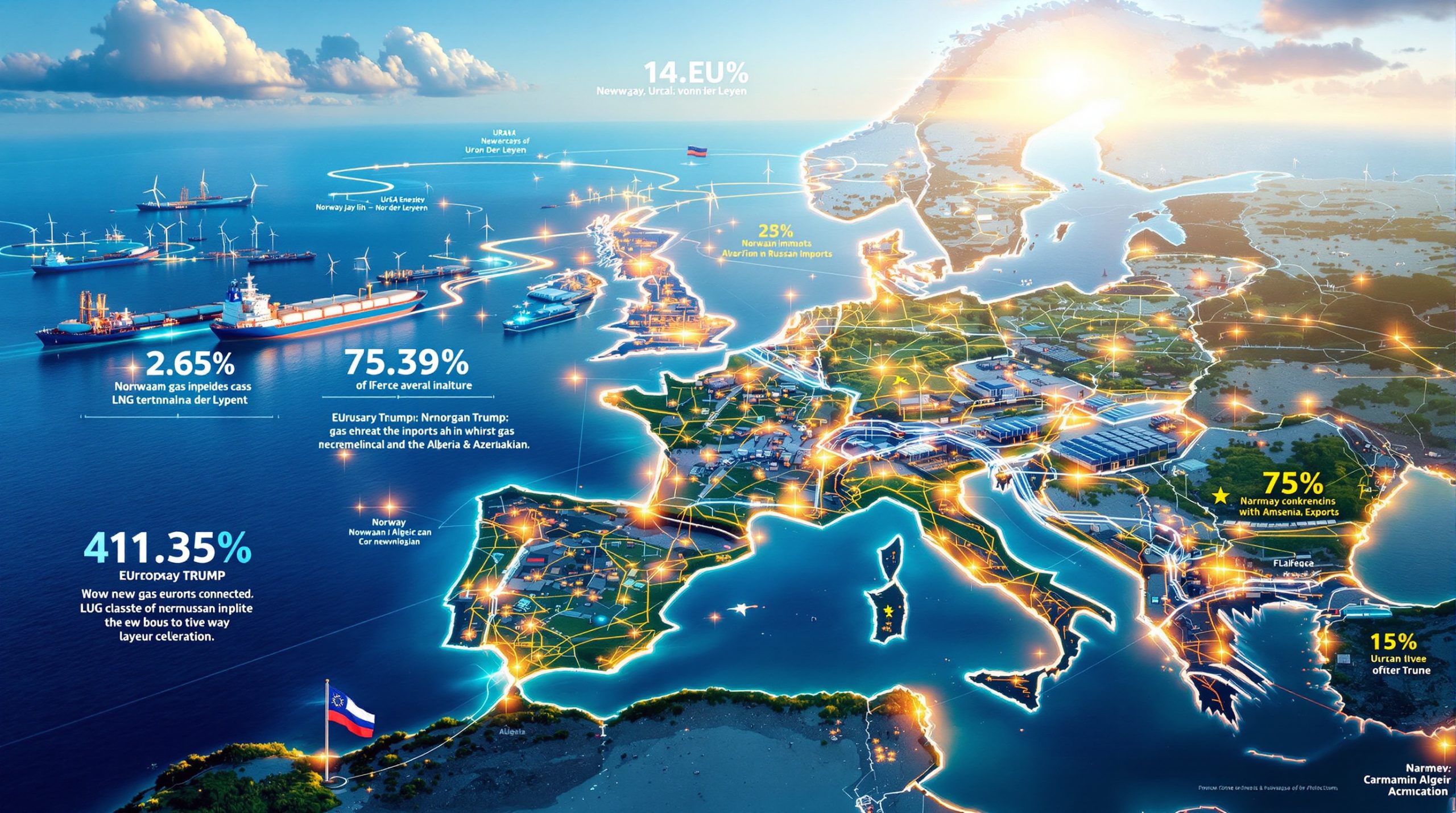AFRY and the Geological Survey of Estonia in Toolse Phosphate Project
Estonia stands at the threshold of a significant resource development opportunity that could reshape its economic landscape and strategic position within Europe. Home to some of the continent's largest phosphorite reserves, Estonia is poised to leverage these resources through the ambitious Toolse Phosphate Project, a collaborative effort between the Geological Survey of Estonia and AFRY, an engineering and design powerhouse.
Introduction to Estonia's Strategic Phosphate Resources
Estonia possesses one of Europe's most substantial phosphorite deposits, representing a crucial strategic resource in today's resource-conscious global economy. These reserves hold particular importance as phosphorus serves as an essential component in approximately 90% of agricultural fertilizers worldwide, making it indispensable for global food security.
Beyond agricultural applications, Estonian phosphate deposits contain valuable rare earth elements (REEs) including neodymium and dysprosium, which are critical components in high-technology applications ranging from smartphones to wind turbines and electric vehicles. This dual-resource potential significantly enhances the strategic value of these deposits.
The development of domestic phosphate resources could substantially reduce Estonia's current reliance on imported phosphate materials, strengthening national resource security while creating a potential export opportunity. As the European Union continues to emphasize critical raw material self-sufficiency, Estonia's phosphate reserves take on heightened strategic importance within the regional context.
"Developing these resources responsibly could position Estonia as a key European supplier of critical raw materials at a time when supply chain resilience has never been more important," notes a recent AFRY assessment of the project's strategic significance.
What is the Toolse Phosphate Project?
The Toolse Phosphate Project represents a comprehensive evaluation of Estonia's phosphorite reserves located in the Toolse region. This initiative brings together the geological expertise of Estonia's national geological survey with AFRY's engineering and technical capabilities to assess the viability of developing these resources.
The project encompasses both preliminary economic assessment (PEA) and pre-feasibility study (PFS) phases, designed to evaluate extraction methodologies, processing requirements, and economic viability. These studies will comprehensively examine both surface and underground mining feasibility studies to determine the optimal approach.
With deposits situated at varying depths throughout the region, the technical assessment must balance extraction efficiency with environmental impact considerations. The phosphorite ore in the Toolse region possesses a medium-to-high grade compared to global averages, though specific concentrations vary throughout the deposit.
Sirli Sipp Kulli, Director of the Geological Survey of Estonia, emphasizes that the project aims to "ensure any potential extraction aligns with strict environmental and social considerations while maximizing economic benefits for Estonia's citizens." This balanced approach reflects Estonia's commitment to responsible resource development.
The project's strategic significance extends beyond immediate economic benefits, potentially positioning Estonia as a key supplier in European agricultural and technological supply chains where phosphate and rare earth elements play crucial roles.
AFRY's Role and Expertise in the Project
AFRY brings substantial mining sector expertise to the Toolse project, leveraging its Swedish-Finnish engineering heritage and global portfolio of resource development projects. The company's responsibilities within the project span economic modeling, technical mining assessments, and environmental impact analysis.
With over 17,000 experts across 40 countries, AFRY offers multidisciplinary capabilities essential for complex resource evaluations. The company's recent partnership with SSAB on a fossil-free steel project in 2024 demonstrates its commitment to sustainable industrial development and resource utilization.
Janne Tikka, Head of AFRY's Mining & Metals division, articulates the company's approach: "Our methodology emphasizes the critical connection between process technologies and environmental performance. We believe sustainable resource development must balance economic viability with ecological responsibility."
AFRY's technical team will apply sophisticated modeling techniques to evaluate ore characteristics, extraction methodologies, and processing requirements. Their analysis will incorporate both conventional approaches and innovative technologies designed to minimize environmental impact while maximizing resource recovery.
The company's previous work on phosphate projects across Scandinavia provides valuable comparative insights, enabling them to benchmark the Toolse opportunity against similar developments. This experience encompasses technical feasibility, environmental permitting processes, and stakeholder engagement practices essential for project success.
Comprehensive Assessment Methodology
Economic Evaluation
The economic assessment of the Toolse project will integrate capital expenditure requirements, operational costs, and projected revenue streams to establish comprehensive financial models. These models will factor in varying scenarios for phosphate market prices, production volumes, and potential rare earth element recovery.
Initial estimates suggest capital expenditure requirements will vary significantly between surface and underground mining approaches, with underground methods typically requiring 30-40% higher initial investment but offering potential long-term advantages.
The evaluation will also assess the feasibility of producing merchant-grade phosphoric acid rather than merely extracting raw ore, potentially adding substantial value to the operation. This advanced processing capability could position the project as a higher-value producer in European markets.
Market analysis will incorporate both current phosphate demand trends and projected future scenarios, accounting for agricultural sector growth and technological applications requiring phosphate derivatives.
Technical Mining Considerations
The technical assessment compares surface (open-pit) mining with underground methodologies to determine the optimal extraction approach. Surface mining typically offers lower operational costs and higher recovery rates but creates more significant environmental disturbance and requires extensive reclamation.
Underground mining presents higher operational complexity and capital requirements but substantially reduces surface disruption and potentially allows for more selective high-grade extraction.
The beneficiation plant evaluation will examine processing requirements to upgrade raw phosphorite to market-ready products. This analysis includes crushing, grinding, flotation, and chemical processing steps, with particular attention to recovery rates, energy requirements, and waste management.
Production process design will establish an integrated workflow from extraction through processing to final product delivery, incorporating efficiency optimizations and quality control mechanisms throughout the value chain.
Environmental and Social Impact Analysis
Environmental assessment forms a critical component of the project evaluation, examining potential impacts on water resources, air quality, biodiversity, and landscape characteristics. This analysis will establish baseline environmental conditions and model potential impacts under various operational scenarios.
Water management receives particular attention given phosphate processing's substantial water requirements and the potential for impacts on groundwater and surface water systems. Advanced recirculation and treatment systems will be evaluated to minimize freshwater consumption.
The socio-economic impact assessment will quantify potential job creation, supply chain opportunities, and tax revenue generation, while also addressing community concerns regarding environmental impacts and quality of life considerations.
Compliance with Estonian regulations, EU directives, and international sustainability standards guides the assessment framework, ensuring the project meets or exceeds all applicable requirements.
Potential Benefits of the Toolse Phosphate Project
Economic Advantages
The Toolse project presents significant employment opportunities across the development, construction, and operational phases. While specific numbers await final feasibility determinations, similar phosphate operations typically generate 200-500 direct jobs and 2-3 times that number in indirect employment.
Capital investment would represent one of Estonia's largest industrial developments, potentially attracting both domestic and international mining investments & insights to the region. This investment would generate substantial economic activity during the construction phase and ongoing benefits throughout operations.
Agricultural sector support represents a strategic advantage, potentially reducing fertilizer costs for Estonian and regional farmers while improving supply security. This benefit aligns with broader European agricultural sustainability initiatives.
Regional economic development would extend beyond direct project employment, creating opportunities for support businesses, logistics providers, and technical service companies within the project's economic sphere.
Strategic Benefits
Enhanced self-sufficiency in phosphate resources would reduce Estonia's current import dependence, improving economic resilience and supply chain security. This self-sufficiency gains importance as global competition for critical resources intensifies.
Estonia's position in global supply chains would strengthen considerably as a reliable European source of phosphate and potentially rare earth elements. This positioning aligns with EU Strategic Autonomy objectives focused on reducing dependency on non-European suppliers.
The potential recovery of rare earth elements from phosphate processing could support Estonia's growing technology sector, potentially enabling domestic production of high-value components for electronics and renewable energy applications.
As AFRY notes in their preliminary assessment, the project could "bolster Estonia's self-sufficiency in critical resources and enhance its position in increasingly vital global supply chains for both agricultural and technological applications."
Expert Perspectives on the Project
Sirli Sipp Kulli, Director of the Geological Survey of Estonia, emphasizes responsible development: "Our approach prioritizes long-term benefits to local communities through job creation and economic development while ensuring strict adherence to environmental protection standards. Estonia's natural resources must benefit current and future generations."
Industry analysts observe that Europe's phosphate self-sufficiency has declined significantly over recent decades, with North African and Middle Eastern suppliers dominating the market. The Toolse project represents one of the few European opportunities to reverse this trend.
Environmental specialists emphasize the importance of comprehensive waste management strategies, particularly regarding phosphogypsum, a byproduct of phosphoric acid production. Modern management techniques have substantially improved compared to historical practices, but require careful implementation.
Agricultural experts note that regional phosphate production could reduce the carbon footprint associated with fertilizer supply chains, potentially offering both economic and environmental advantages for European farming operations.
Comparison with Similar Phosphate Development Projects
The Toolse project shares similarities with Finland's Sokli phosphate development, though the Estonian deposits generally offer more accessible extraction conditions. The Finnish experience provides valuable lessons in regulatory navigation and stakeholder engagement approaches.
Norwegian phosphate operations demonstrate successful integration of environmental protection measures with productive mining activities, particularly regarding water management and habitat protection.
Global phosphate development has increasingly emphasized recovery of secondary elements, including rare earths and uranium, to improve overall project economics. The Toolse project's REE potential follows this trend toward comprehensive resource utilization.
Technological innovations in phosphate processing have substantially reduced ESG challenges in mining compared to operations developed decades ago, with closed-loop water systems and improved emission controls representing industry standards.
Future Outlook and Next Steps
The completion of preliminary economic assessment represents the project's immediate milestone, followed by the more detailed pre-feasibility study. These studies typically require 12-18 months to complete, though timelines may vary based on technical findings.
Decision-making following the pre-feasibility study will involve multiple stakeholders, including government agencies, potential investors, and community representatives. This collaborative approach ensures all perspectives receive consideration before advancing to detailed engineering and permitting.
Potential challenges include regulatory approval processes, capital funding requirements, and ongoing public engagement to maintain community support. Addressing these challenges proactively will be essential for project success.
The long-term vision for Estonia's phosphate industry extends beyond initial extraction to potentially include downstream processing, creating higher-value products and establishing an integrated resource utilization framework aligned with circular economy principles.
FAQs About the Toolse Phosphate Project
What is phosphorite and why is it important?
Phosphorite is a sedimentary rock containing high concentrations of phosphate minerals, primarily apatite. Its importance stems from phosphorus being essential for all living organisms, with no substitute in agricultural applications. Modern food production depends critically on phosphate fertilizers, making this resource strategically vital for global food security.
How will the project impact local communities?
Local communities can expect employment opportunities spanning technical, operational, and administrative roles. Infrastructure improvements typically accompany major resource projects, and local businesses often experience increased activity. Environmental considerations, including dust, noise, and visual impacts, will be managed through comprehensive mitigation strategies developed in consultation with community stakeholders.
What environmental safeguards are being implemented?
Environmental protection measures include advanced water management systems to prevent contamination, dust suppression technologies, noise mitigation approaches, and comprehensive monitoring programs. Waste management strategies will incorporate modern practices for tailings storage and potential phosphogypsum management. Rehabilitation planning begins during project design rather than as an afterthought.
How does this project contribute to Estonia's economic development?
The project supports economic diversification, creates skilled employment opportunities, and generates tax revenue for public services. It strengthens Estonia's industrial capability while potentially reducing agricultural input costs through domestic fertilizer production. The development of technical expertise associated with the project can transfer to other sectors, creating lasting economic benefits.
What role do rare earth elements play in the project's value proposition?
Rare earth elements contained within phosphate deposits represent a potential secondary resource stream, enhancing overall project economics. These elements, critical for technologies including permanent magnets, electronic components, and renewable energy systems, command premium prices in global markets. Their recovery would align with EU efforts to secure strategic material supply chains and could support development of high-tech manufacturing within Estonia.
Understanding the geological insights on ore deposits and implementing effective mineral exploration strategies will be crucial as the AFRY and the Geological Survey of Estonia partnership continues to evaluate the Toolse phosphate project's potential to transform Estonia's resource landscape.
Want to Be Alerted About the Next Major Mineral Discovery?
Discovery Alert's proprietary Discovery IQ model identifies significant ASX discoveries in real-time, transforming complex data into actionable investment insights. See how historic mineral discoveries have generated exceptional returns by visiting our dedicated discoveries page and start your 30-day free trial today.




